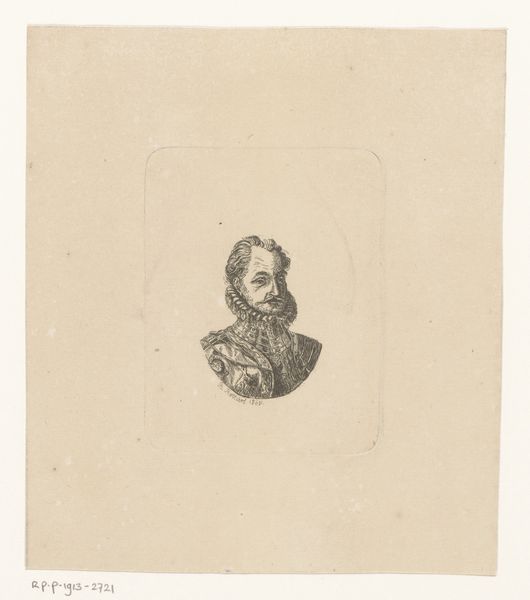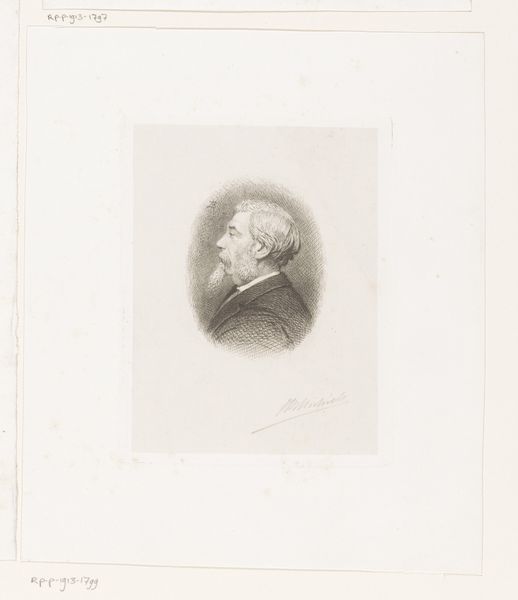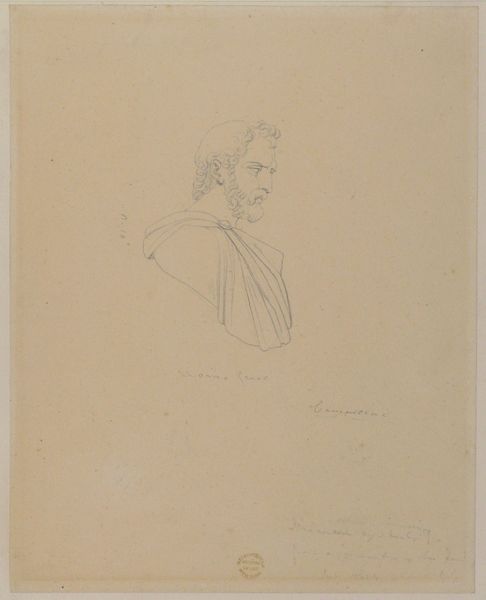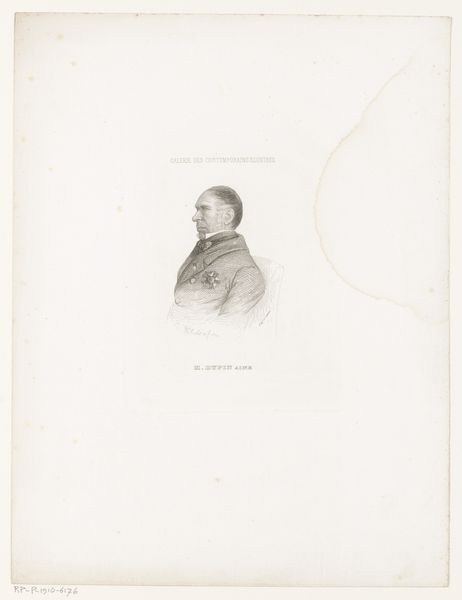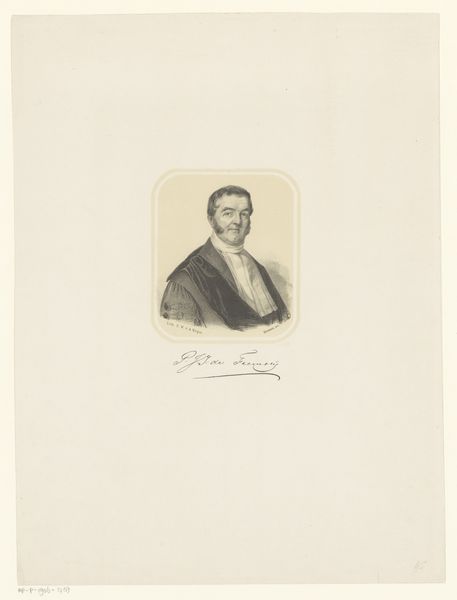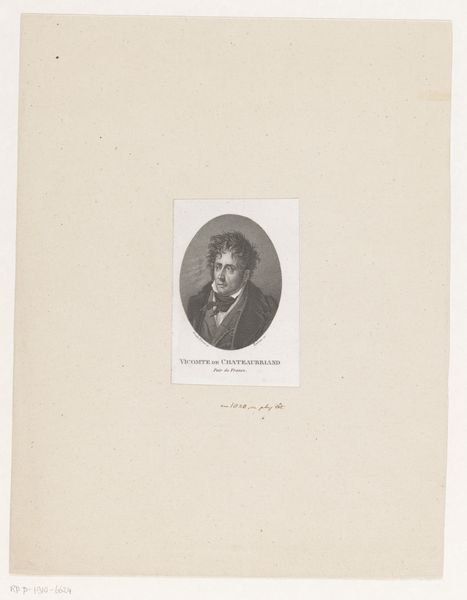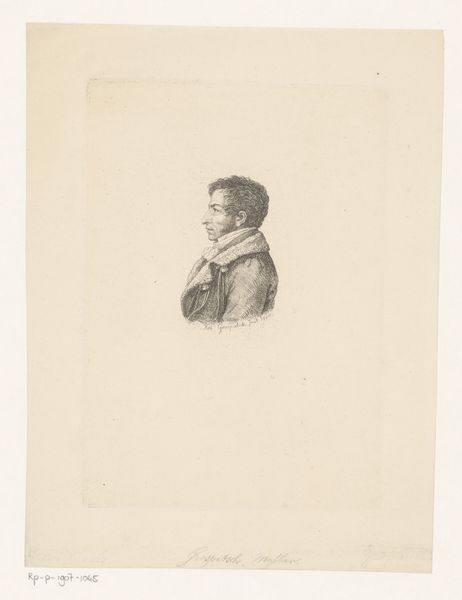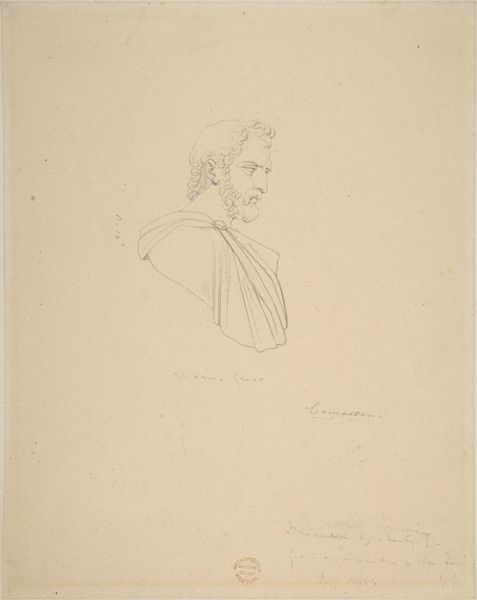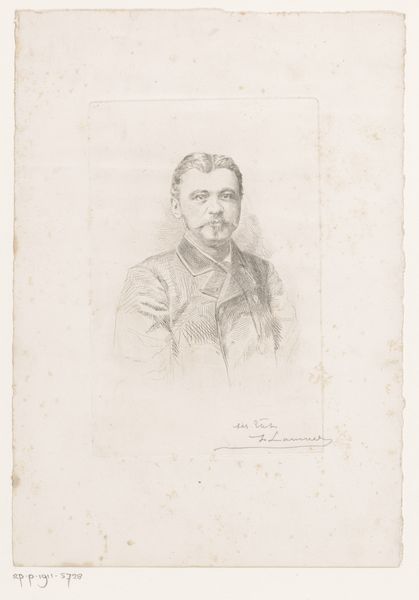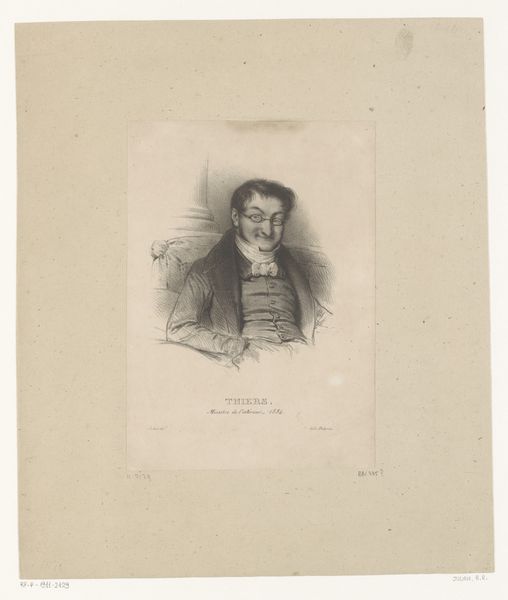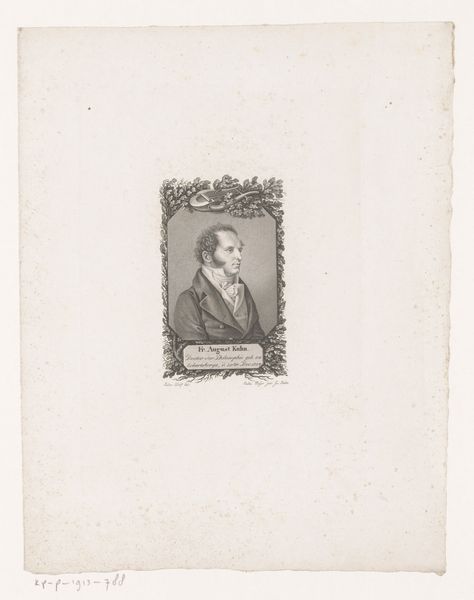
drawing, pencil
#
portrait
#
drawing
#
neoclacissism
#
ink paper printed
#
pencil sketch
#
pencil
#
pencil work
#
realism
Dimensions: height 235 mm, width 162 mm, height 330 mm, width 265 mm
Copyright: Rijks Museum: Open Domain
Curator: Here we have "Portret van Zacharias Heyns," a drawing created between 1827 and 1828 by A. Heyd. It appears to be primarily a pencil sketch on paper. Editor: It's quite austere, isn’t it? Very formal, very contained. The man himself seems quite… stoic, even with that elaborate ruff around his neck. Curator: Well, let's delve into that ruff, shall we? Beyond its immediate aesthetic impact, it speaks volumes. Ruffs like this, common in the 16th and early 17th centuries, denoted status and wealth. Its inclusion, even in a portrait created much later, suggests a connection to tradition, to established hierarchies, and perhaps an attempt to link the sitter, Zacharias Heyns, to that legacy. The crispness of the ruff suggests careful maintenance; luxury represented, or rather signified through extreme labour in creating perfect form. Editor: Interesting point. But looking at the material execution, I’m drawn to the delicate pencil work. Note how the artist uses shading to create volume, how they’ve paid such close attention to the texture of his beard. Pencil drawings at this time, as part of a process, democratized portraiture to a degree, shifting it from exclusive oil commissions to something more reproducible and accessible. It brings to light the evolving material conditions and economies of image production. Curator: That's true, but consider the symbolism in the direct gaze, averted though it is. It hints at inner strength, moral uprightness – a visual vocabulary borrowed from classical portraiture and adapted to the times. Heyns is presented not just as an individual but as a figure embodying certain ideals of virtue and learnedness. Editor: Yes, but it's the "how" of that presentation that fascinates me: the specific qualities of the graphite, the tooth of the paper. This all contributes to the feeling of slightly faded glory. Consider how this drawing might have circulated—as a model for prints, for example, making the image itself a commodity within networks of production and distribution. Curator: It seems we’re approaching this from different yet equally enriching paths. It's a testament to how even a seemingly simple portrait can resonate across layers of meaning. Editor: Indeed, considering both its physical properties and the cultural symbols, it is an interesting subject. A great snapshot into history!
Comments
No comments
Be the first to comment and join the conversation on the ultimate creative platform.

